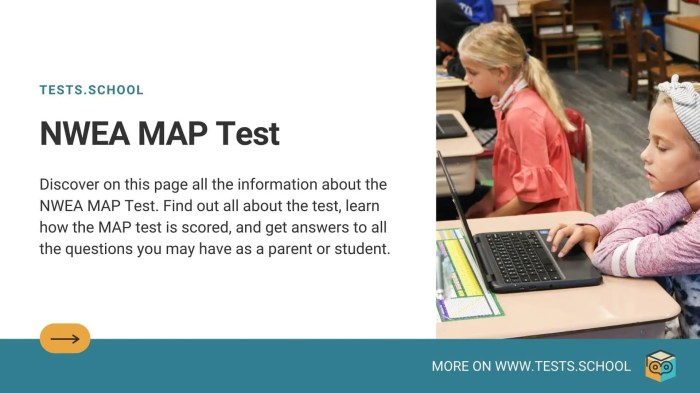Nwea map test answers reading – Embark on a captivating journey to master the NWEA MAP Test Reading with this comprehensive guide. Dive into effective strategies, analyze the test’s content, and discover proven preparation tips to unlock your full potential and achieve reading success.
Delve into the intricacies of the NWEA MAP Test Reading, exploring its structure, question types, and cognitive skills assessed. Learn the secrets to answering multiple-choice and open-ended questions with confidence and precision.
Overview of NWEA MAP Test Reading

The NWEA MAP Test Reading is a standardized assessment that measures students’ reading skills and knowledge. It is designed to provide educators with information about students’ strengths and weaknesses in reading, so that they can provide targeted instruction.The MAP Test Reading is divided into three sections:
- Reading Comprehension: This section assesses students’ ability to understand and interpret written text.
- Vocabulary: This section assesses students’ knowledge of words and their meanings.
- Language Usage: This section assesses students’ ability to use language correctly.
Each section of the MAP Test Reading includes a variety of question types, including multiple-choice, short answer, and essay questions. The test is timed, and students are given a limited amount of time to complete each section.The MAP Test Reading is a valuable tool for educators because it provides them with information about students’ reading skills and knowledge.
This information can be used to identify students who need additional support, and to develop targeted instruction that will help students improve their reading skills.
Strategies for Answering Reading Questions
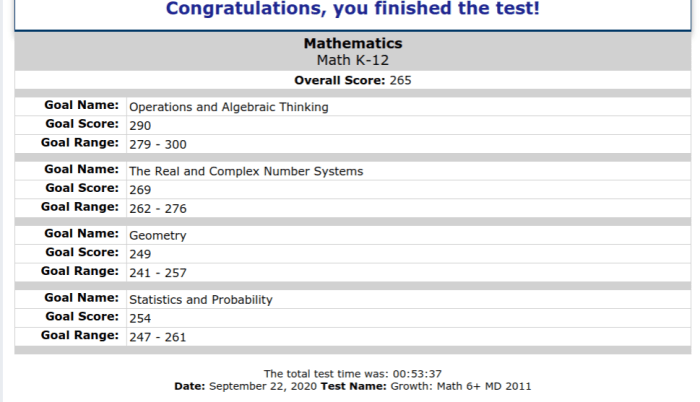
Mastering the NWEA MAP Test Reading section requires effective strategies for answering both multiple-choice and open-ended questions. This guide provides invaluable tips to enhance your reading comprehension and equip you with techniques to tackle the test confidently.
Multiple-Choice Questions
*
-*Read the passage carefully
Understand the main idea and supporting details before attempting any questions.
-
-*Preview the question
Identify the type of question (e.g., literal, inferential, vocabulary) and the specific information it seeks.
-*Eliminate incorrect options
Rule out options that are clearly wrong or irrelevant to the passage.
-*Support your answer
Choose the option that is directly supported by evidence from the text.
Open-Ended Questions, Nwea map test answers reading
*
-*Understand the question
Determine the specific information the question asks for and the type of response it requires (e.g., summary, analysis, evaluation).
-
-*Gather evidence
With NWEA MAP test answers reading, you can excel in your reading comprehension skills. For a mental break, try your hand at the early stage of life crossword . It’s a fun way to test your knowledge and expand your vocabulary.
Afterward, return to your NWEA MAP test answers reading to continue improving your reading abilities.
Identify relevant passages from the text that support your answer.
-*Organize your response
Structure your answer logically, using clear and concise language.
-*Proofread carefully
Check for errors in grammar, spelling, and content before submitting your response.
Improving Reading Comprehension
*
-*Practice regularly
Read diverse texts to expand your vocabulary and improve your understanding of different writing styles.
-
-*Annotate as you read
Highlight key ideas, make notes, and ask yourself questions to enhance comprehension.
-*Identify text structure
Analyze the organization of the text, such as paragraphs, headings, and transitions, to grasp its overall structure.
-*Use context clues
Pay attention to surrounding words and phrases to infer the meaning of unfamiliar terms.
Content Analysis of the Test
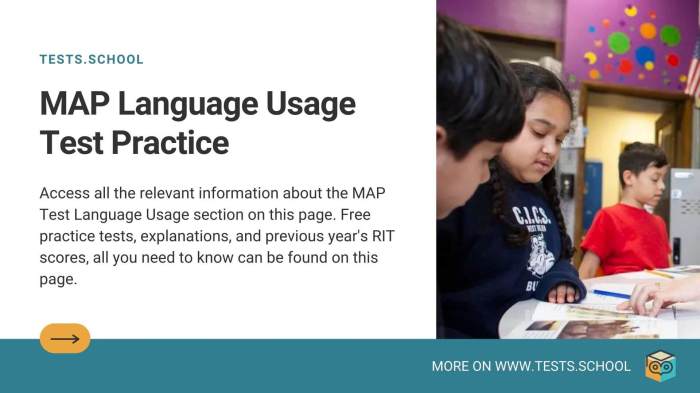
The NWEA MAP Test Reading section comprises a diverse range of text types and passages, each presenting unique challenges and assessing different reading skills.
Types of Texts and Passages
The test includes a variety of text types, such as:
- Fiction: Stories, poems, plays, and novels
- Non-Fiction: Articles, essays, biographies, and scientific texts
- Informational: Maps, charts, graphs, and diagrams
Common Themes and Topics
The reading questions cover a wide range of themes and topics, including:
- Main idea and supporting details
- Character analysis and development
- Cause and effect relationships
- Compare and contrast
- Inference and prediction
Cognitive Skills and Abilities
The test assesses a variety of cognitive skills and abilities, including:
- Comprehension: Understanding the meaning and message of the text
- Analysis: Breaking down the text into its components and identifying its structure
- Evaluation: Judging the quality and credibility of the text
- Inference: Drawing conclusions based on the information provided
- Problem-solving: Using the information in the text to solve problems or answer questions
Preparation Tips for Students: Nwea Map Test Answers Reading
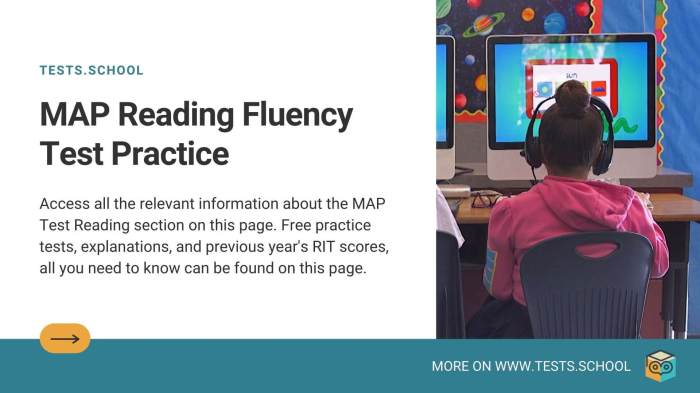
Preparing for the NWEA MAP Test Reading can help students perform to the best of their abilities. By following these strategies, students can feel confident and prepared on test day.
Practice Materials and Study Resources
Take advantage of practice tests and study materials provided by NWEA or other reputable sources. Practice tests simulate the actual test experience and help students identify areas where they need improvement.
- NWEA MAP Test Reading Practice Tests: Official practice tests from NWEA that provide a realistic testing experience.
- Online Study Resources: Websites and platforms offer interactive practice questions, flashcards, and study guides.
- Textbooks and Workbooks: Review textbooks and workbooks to reinforce concepts and practice answering different types of reading questions.
Effective Study Habits and Time Management
Establish a regular study schedule and stick to it. Break down study sessions into manageable chunks to avoid feeling overwhelmed. Focus on understanding concepts rather than memorizing facts.
- Create a Study Schedule: Allocate specific times each day or week for studying.
- Use Active Learning Techniques: Engage with the material by taking notes, highlighting, and summarizing.
- Review Regularly: Regularly revisit concepts to strengthen understanding and retention.
Managing Test Anxiety and Building Confidence
Test anxiety is common, but it can be managed with effective strategies. Practice relaxation techniques, such as deep breathing exercises or meditation, to calm nerves.
- Practice Relaxation Techniques: Deep breathing, meditation, or visualization can help reduce anxiety.
- Positive Self-Talk: Replace negative thoughts with positive affirmations to boost confidence.
- Visualize Success: Imagine yourself performing well on the test and achieving your goals.
Data Analysis and Interpretation
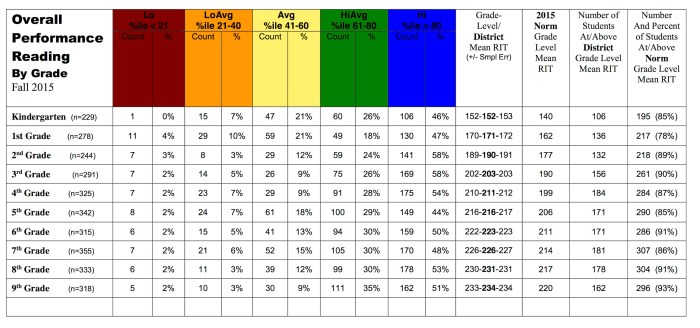
Understanding your child’s NWEA MAP Test Reading scores is crucial to monitor their academic progress and identify areas where support may be needed. This section provides guidance on interpreting the test results and using them to inform educational decisions.
The NWEA MAP Test Reading score report provides a comprehensive analysis of your child’s reading abilities, including:
- Overall RIT score:A single number that represents your child’s overall reading achievement.
- RIT scores for specific reading sub-skills:These include measures of phonemic awareness, phonics, fluency, vocabulary, and comprehension.
- Percentile rank:Indicates how your child’s score compares to other students at the same grade level.
- Growth percentile:Shows how much progress your child has made compared to similar students.
The NWEA MAP Test Reading scores are divided into different performance levels, each with its own implications:
- Below Basic:Indicates that your child is struggling with reading and may need additional support.
- Basic:Indicates that your child is meeting the minimum expectations for reading at their grade level.
- Proficient:Indicates that your child is performing well in reading and is on track for success.
- Advanced:Indicates that your child is exceeding expectations in reading and may be ready for more challenging material.
The NWEA MAP Test Reading results can be used to:
- Identify strengths and weaknesses:The sub-skill scores can help you pinpoint areas where your child excels and areas where they may need extra help.
- Set realistic goals:The growth percentile can provide a benchmark for setting achievable goals for your child’s reading development.
- Inform instruction:The test results can guide teachers in tailoring instruction to meet your child’s individual needs.
- Monitor progress:By comparing scores over time, you can track your child’s progress and make adjustments as needed.
It’s important to remember that the NWEA MAP Test Reading is just one measure of your child’s reading abilities. It should be considered in conjunction with other information, such as classroom performance and teacher observations, to provide a comprehensive understanding of your child’s progress.
Query Resolution
What is the NWEA MAP Test Reading?
The NWEA MAP Test Reading is a standardized assessment that measures students’ reading comprehension skills.
What types of questions are included in the test?
The test includes multiple-choice and open-ended questions that assess students’ understanding of literary and informational texts.
How can I prepare for the test?
Practice reading a variety of texts, develop effective reading strategies, and manage your time wisely during the test.
